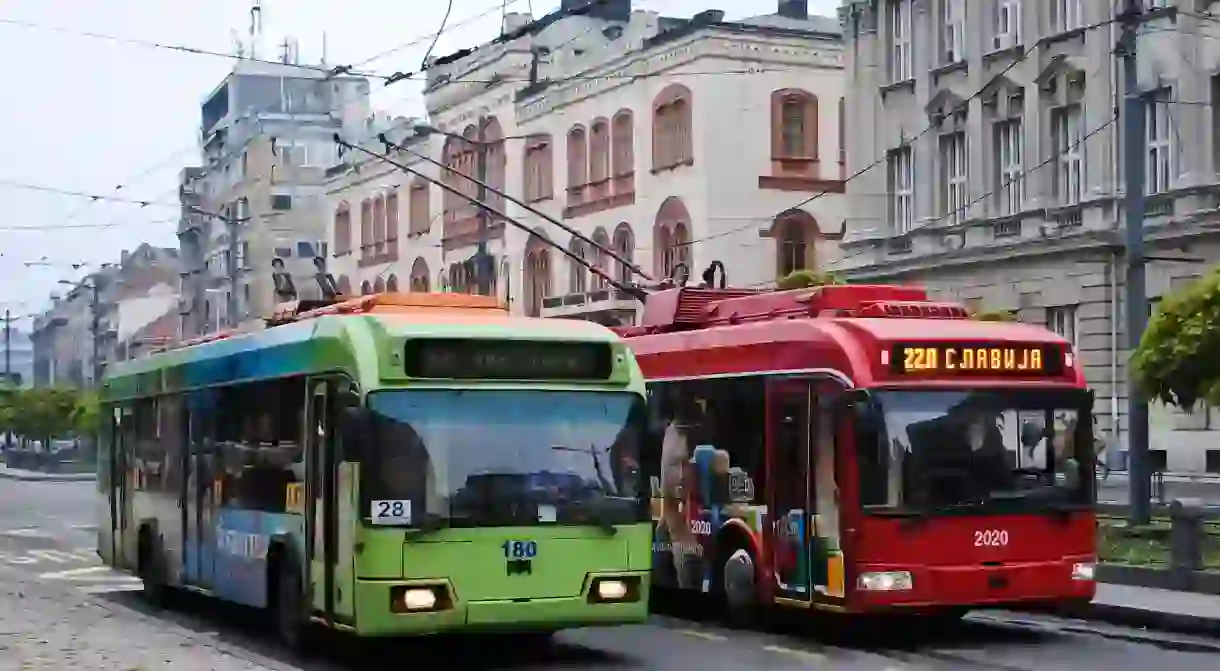A Guide To Using Public Transport in Belgrade, Serbia

If there’s one thing we love about the Serbs it is their total refusal to beat around the bush. With that mind, we’re going to come straight out and say that public transport isn’t something the nation does particularly well. The buses, trams and trolleys of the capital certainly aren’t the worst on the continent, but Prague or Vienna this is not. With that disclaimer in place, here is your guide to using public transport in Belgrade.
Paying
If you jump on a trolley, tram or bus in Belgrade, you will initially be taken aback by the fact that nobody seems to be paying to use the system. Don’t be fooled into thinking this means you can ride the cars for free though, as you’ll only find yourself on the end of a fine. Ticket inspectors are more prevalent than most assume, and more often than not they will be of the plain clothes variety.
To buy a ticket for the system, you need to head to one of the many kiosks dotted around the city and purchase a ‘Bus Plus’ card. The system acts on a ‘pay as you go’ basis, with one 90 minute journey costing a measly 89RSD. Simply purchase the card (it costs 250RSD), tell the teller how much you’d like to put on, and away you go.
When entering the vehicle (you can use any of the doors), be sure to hold your Bus Plus card against the reader until you get the verification. The ticket inspectors won’t take any spluttering or ‘I’m foreign, I don’t understand’ nonsense. It isn’t difficult to use, although brushing up on a little Cyrillic beforehand might help.

Buses
If you’re looking to use public transport in Belgrade, chances are you’ll spend most of that time hopping the yellow buses that run rings around the White City, travelling from New Belgrade to Konjarnik and back. As expected, these vehicles are extremely hit and miss. You are just as likely to get a sleek modern one as you are a spluttering fume expeller from the 1970s.
Zeleni Venac is the main hub for inner city traffic, just up the hill from the city’s central bus and train stations. A map of the lines can be found on the official website of the system, although needless to say it could do with some cleaning up.
Despite the mild pessimism, Belgrade’s buses are easy to use and are decent enough ways to get around the city. Just be sure to pay your way, avoid your usual rush hours, and bring along a pinch of salt or two.

Trams
Belgrade also has a tram system, although referring to it as ‘extensive’ would be fairly disrespectful to that term. The first line was introduced way back in 1892, and the network hasn’t really received any attention since the demise of Yugoslavia. Eleven lines run around the city – although ‘jog’ may well be a more accurate word there.
There is something to leave here, as tram line number two circles the downtown part of the city. It has become known informally as the krug dvojke, or the ‘Circle of Line 2’, and it can be a leisurely way to do a lap of Stari Grad before jumping off and tackling the sights.

Trolleybuses
Is there a form of public transport that invokes memories of socialism more than the good old trolleybus? The answer you are looking for is ‘no’. Belgrade’s trolleybuses were introduced in the late ’40s, and little has changed since then.
There are seven lines that traverse the city, and they seemingly make their way to Studentski trg at the same time to honk their horns and generally get in the way. There are plans to pedestrianise that part of the city, however, so the days of the faithful trolleybus could be numbered.

The rest, sort of
Belgrade also has a small number of mini buses that run around the city, providing far more efficient transport between certain parts at bigger prices. The Serbian capital is also one of the few major European cities that doesn’t have a metro, and despite occasional governmental promises, this shows no signs of changing any time soon.
There is a certain charm to Belgrade’s public transport, although that charm is almost definitely on the gritty side of the spectrum. It will get the job done, though, so don’t start thinking that it is to be avoided.













